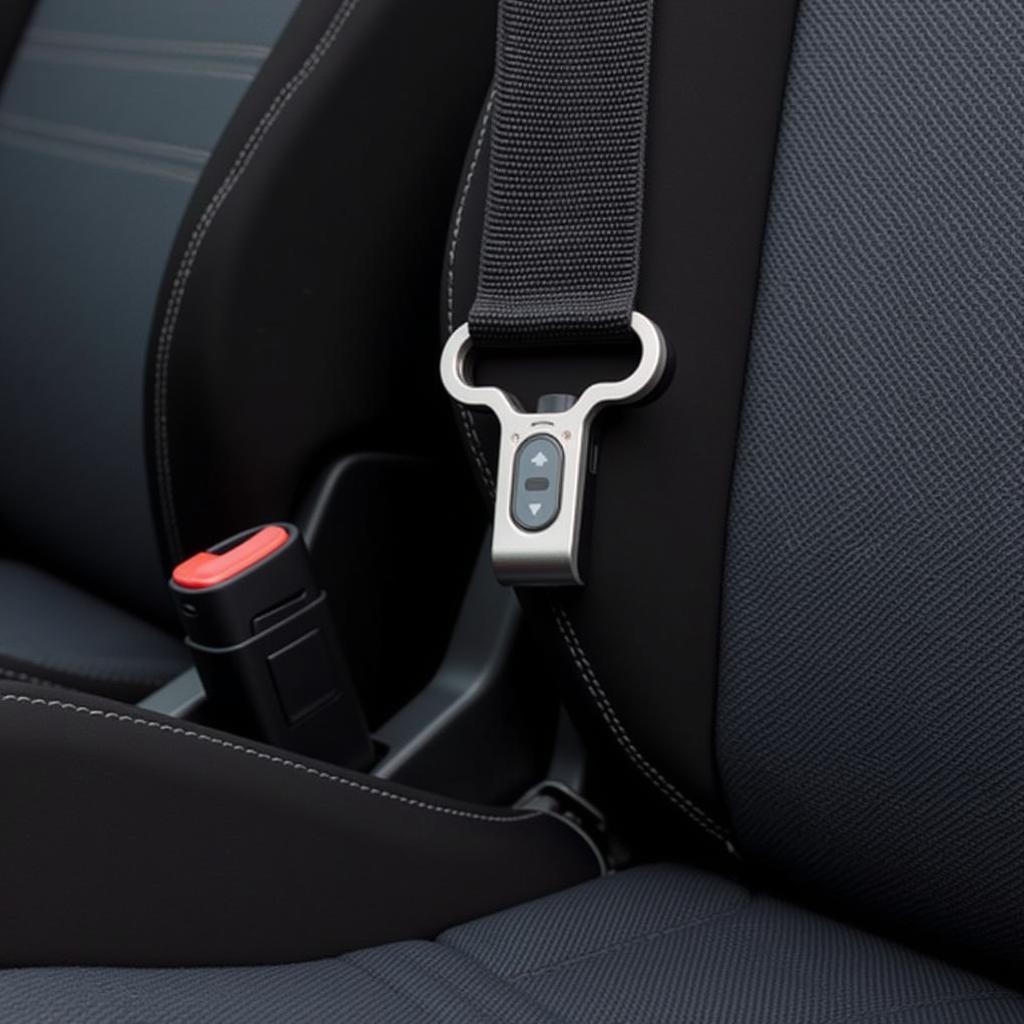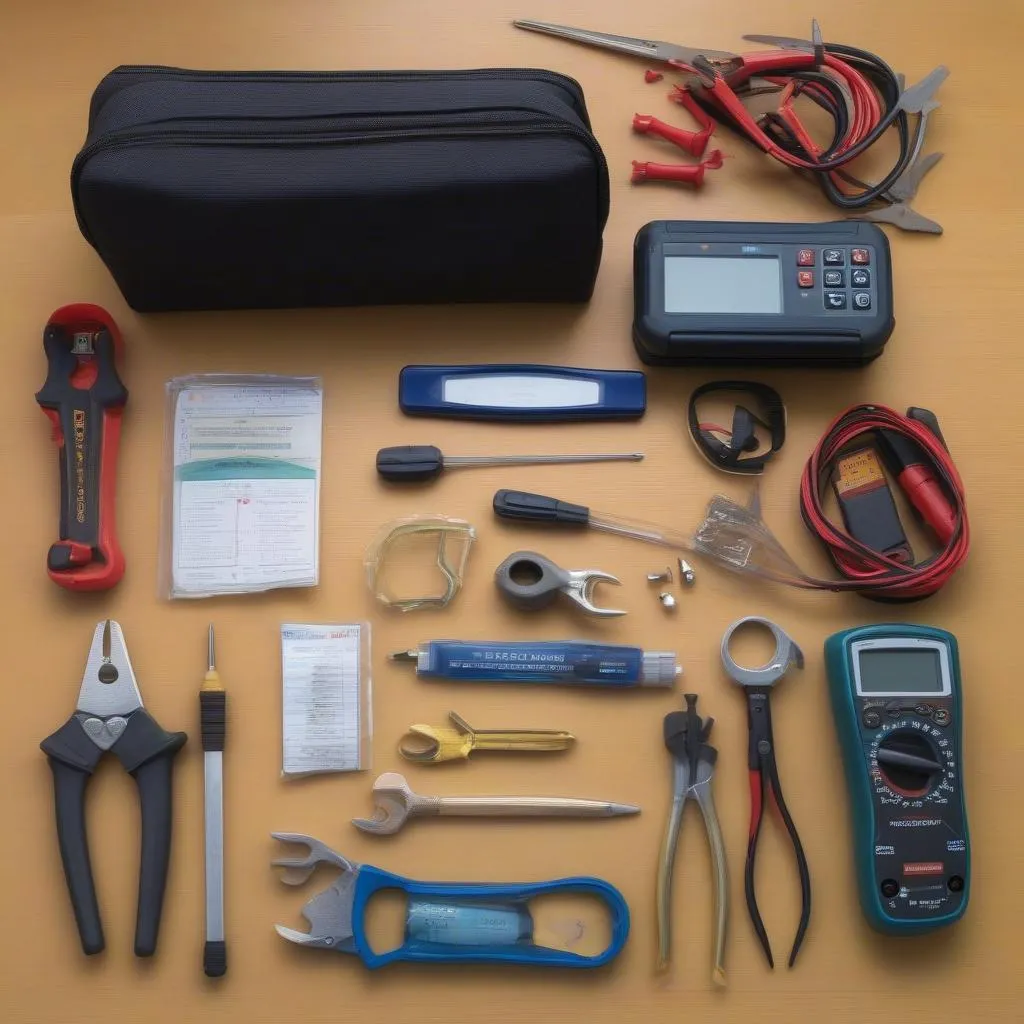The brake warning light on your ’97 Lumina is an essential safety feature, designed to alert you to potential issues with your braking system. Ignoring it could lead to dangerous driving conditions and costly repairs. This comprehensive guide will help you understand the common causes of a ’97 Lumina brake warning light and provide step-by-step troubleshooting solutions to get you back on the road safely.
Understanding Your Lumina’s Brake Warning Light
When your Lumina’s brake warning light illuminates, it signals a potential problem within your braking system. This could range from a simple issue like low brake fluid to more complex problems with the master cylinder, ABS system, or brake lines.
Here’s what the brake warning light could mean:
- Low Brake Fluid: This is the most common reason for the warning light to come on. Check the brake fluid level in the master cylinder reservoir.
- Worn Brake Pads: Brake pads have wear indicators that make a squealing sound when they’re thin. If you hear this noise or notice reduced braking performance, it’s time to inspect your brake pads.
- Faulty Brake Light Switch: This switch activates your brake lights when you press the pedal. A malfunctioning switch can also trigger the warning light.
- Issues with the Master Cylinder: The master cylinder is responsible for distributing brake fluid pressure. Leaks or internal failures can cause braking problems.
- ABS System Malfunction: If there’s a problem with your Anti-lock Braking System (ABS), a separate ABS warning light might illuminate alongside the brake warning light.
Troubleshooting Your ’97 Lumina Brake Warning Light
Before you begin, park your Lumina on a level surface and engage the parking brake.
1. Check the Brake Fluid Level:
- Locate the brake master cylinder reservoir under the hood.
- Carefully remove the reservoir cap, noting the “Min” and “Max” markings.
- If the fluid level is below the “Min” line, add the recommended brake fluid for your Lumina.
- Important: If you need to add brake fluid frequently, it indicates a leak that needs immediate professional attention.
2. Inspect the Brake Pads:
- With the car safely lifted and secured on jack stands, visually inspect all four brake pads for wear.
- Look for thin pads or pads with uneven wear patterns.
- If the pads are worn down to the metal wear indicators, they need replacement.
3. Test the Brake Light Switch:
- Have someone press the brake pedal while you check if the brake lights are working.
- If the lights don’t illuminate, the brake light switch might be faulty and require replacement.
4. Inspect for Brake Fluid Leaks:
- Carefully examine the brake lines, hoses, and connections around the master cylinder and each wheel for any signs of leakage.
- Look for wet spots, drips, or discolored areas that could indicate a fluid leak.
“When dealing with brakes, safety is paramount. If you’re uncomfortable performing these checks or suspect a more serious issue, consult a qualified mechanic immediately.” – John Miller, ASE Certified Master Technician
When to Seek Professional Help
While some brake warning light issues can be resolved with simple DIY fixes, others require the expertise of a qualified mechanic.
Consider seeking professional help if:
- You’re uncomfortable working on your vehicle’s braking system.
- The brake warning light remains on after checking and topping off the brake fluid.
- You notice brake fluid leaks or suspect a problem with the master cylinder.
- Your ABS warning light is illuminated along with the brake warning light.
Maintaining Your Lumina’s Brake System
Regular maintenance is crucial for keeping your Lumina’s braking system in optimal condition:
- Check brake fluid levels regularly.
- Inspect brake pads and rotors every 12,000 miles.
- Have your brake system flushed and refilled with fresh fluid every 24,000 miles or as recommended in your owner’s manual.
- Address any brake warning light issues promptly.
Conclusion
A glowing brake warning light in your ’97 Lumina should never be ignored. By understanding the potential causes and following these troubleshooting steps, you can address the issue promptly and ensure your safety on the road. Remember, when in doubt, consult a qualified mechanic for a thorough inspection and professional repair.


